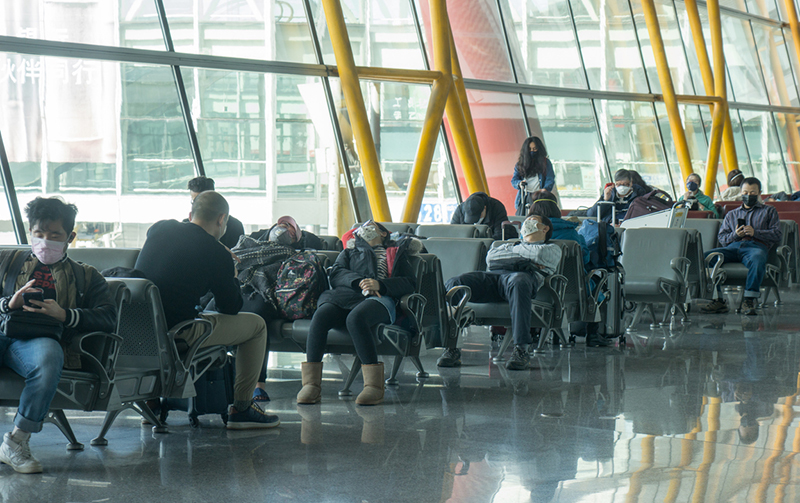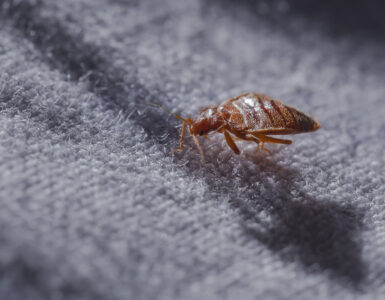Airports are breeding grounds for germs even at the best of times, and with the ongoing COVID-19 Coronavirus outbreak, travellers are more anxious than ever about finding themselves in the midst of airport crowds where the virus can spread quickly. The busiest international airports around the world are taking safety measures to keep passengers and employees healthy. But there are also some simple things we as travellers can do to protect ourselves and others. Let’s take a look at what they are.
What Are Airports Doing to Avoid Coronavirus?
Besides screening passengers and carrying out temperature checks, many airports are taking additional preventive steps to slow down the virus spread. Here are some of them:
- Introducing hand-sanitizer stations throughout the terminals. A number of airlines have chosen to set up additional dispensers at check-in counters and gates.
- Increasing the cleaning frequency of surfaces that can harbor the virus. Everything from restrooms to security checkpoints and food courts is being disinfected on a regular basis.
- Wiping down high-touch points such as handrails, elevator buttons, door handles, vending machines, and touch screens of self-service check-in kiosks multiple times a day.
- Upgrading cleaning products to strong hospital-grade disinfectants.
- Encouraging passengers to check in online in order to avoid touching self-service kiosk screens and potentially get contaminated.
- Asking travellers to show their boarding pass and identification instead of using fingertip scans at airport lounges.
- Having the personnel wear rubber gloves when conducting the screening and searching carry-on bags.
- Displaying signs with information, often in multiple languages, on the coronavirus infection symptoms and the ways to reduce the spread of illness.
In our airport guides we are now adding a link to the airport’s COVID-19 Coronavirus statements (when one is available). Many of these statements tell passengers what preventative measures are being taken.
What Can Passengers Do to Limit Their Exposure?
In addition to the measures that airports are implementing to protect the passengers, here’s what travellers can do to keep themselves and others from getting infected:
- Most obvious, and most important, if you have been (or suspect you have been) exposed to someone with the virus, do not travel!
- Ensure good hand hygiene to prevent catching the virus through contact with infected surfaces. Health authorities recommend washing hands often with soap and warm water and making sure to scrub for at least 20 seconds.
- Don’t touch your mouth, nose, or eyes with unwashed hands.
- Use an alcohol-based hand sanitizer with at least 60 percent ethanol after touching any surfaces. Wait until the sanitizer dries completely on your hands. Starting Friday, the TSA changed carry-on rules to allow passengers to carry up to 12 ounces of hand sanitizer, an increase from the previous limit of 3.4 ounces.
- Make sure to always cough into your elbow.
- Try to wait for your flight in the least crowded areas.
- Maintain 1 meter (3 feet) distance between yourself and other passengers.
- Avoid close greetings, farewells, and shaking hands.
- Consider checking in online in advance so that you don’t need to visit an agent at the airport.
- Travel with a carry-on bag to avoid checking luggage.
- Place your phone, keys, and the contents of your pockets into your carry-on bag instead of the plastic bins that go through the scanner.
- Don’t walk barefoot through the metal detector to avoid germs at the security checkpoint.
- Use a credit or debit card instead of paying with cash at airport restaurants, in duty-free shops and newsstands. Alternatively, you can download phone apps such as Apple Pay or Google Pay for making purchases.
- Keep in mind that the masks are most effective for those who are already infected and will not necessarily protect you from the virus.
As the COVID-19 situation continues to evolve, check the Centers Centers for Disease Control and Prevention website for the latest developments and advice. Most importantly, remember that we all have a responsibility to prevent the virus from spreading further and keep ourselves and other travellers safe. Note that if you are returning from a trip to Europe or Asia, you may be required to self-quarantine at home for 14 days. If you can work from home, do it!
Travel safe everyone!









